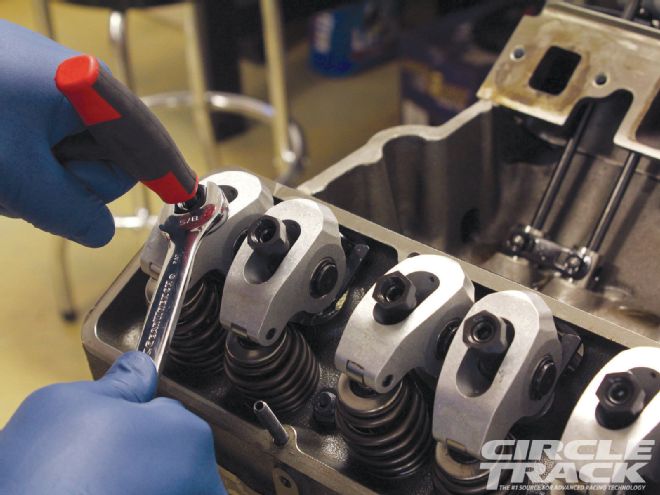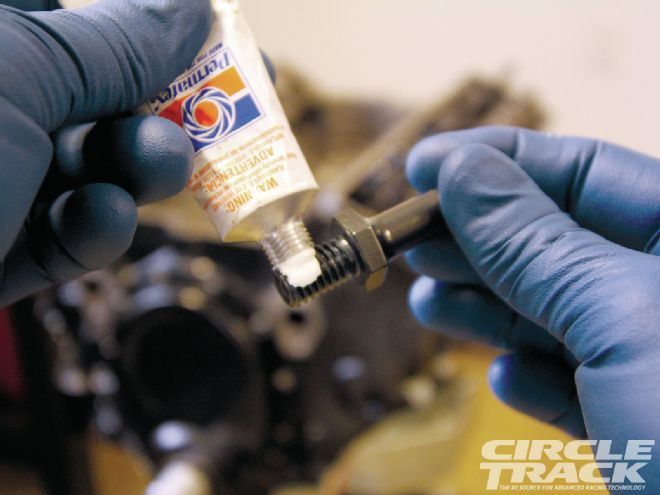
Even if you have the best valvetrain components in your race engine, improper installation and alignment can leave it huffing and wheezing like a back-of-the-pack hunk of junk. Worse, poor valvetrain alignment will lead to accelerated wear which can cause parts to wear out and break before you even make it to rebuild time.
There are also plenty of times you may need to work on your race engine's valvetrain for general maintenance. Inexpensive stock valvesprings in crate engines help manage costs, but they are also prone to losing pressure and must be replaced regularly. Engines running flat tappet lifters must also have the lash on all the valves regularly checked. Finally, you may attempt to repair or rebuild your own race engine and must make sure that the valvetrain is assembled as well as possible.
 <STRONG>1</STRONG> Most cylinder heads for Chevrolet small-blocks have bolt holes for the rocker studs that are open to the water jacket. If you don't apply thread seal to the rocker studs, this is a guaranteed coolant leak.
<STRONG>1</STRONG> Most cylinder heads for Chevrolet small-blocks have bolt holes for the rocker studs that are open to the water jacket. If you don't apply thread seal to the rocker studs, this is a guaranteed coolant leak.
While reassembling Circle Track's Dyno Mule Chevy 350 for an upcoming story, we also had the opportunity to try out Lunati's new Voodoo aluminum rocker arms. These new Lunati rockers are full roller to minimize friction and feature oiling galleries to lubricate and cool the valvesprings as well as the trunion and roller tip. They are also machined to provide plenty of clearance for high-lift aggressive cam profiles--which fits the need for the solid roller Comp camshaft we're using that produces 0.610 lift at the valve.
We'll fire up the dyno mule in a future issue for some interesting tests. But in the meantime, we thought we'd pass along a few tips for making sure your valvetrain is working as efficiently as possible. So without further ado, here they are.